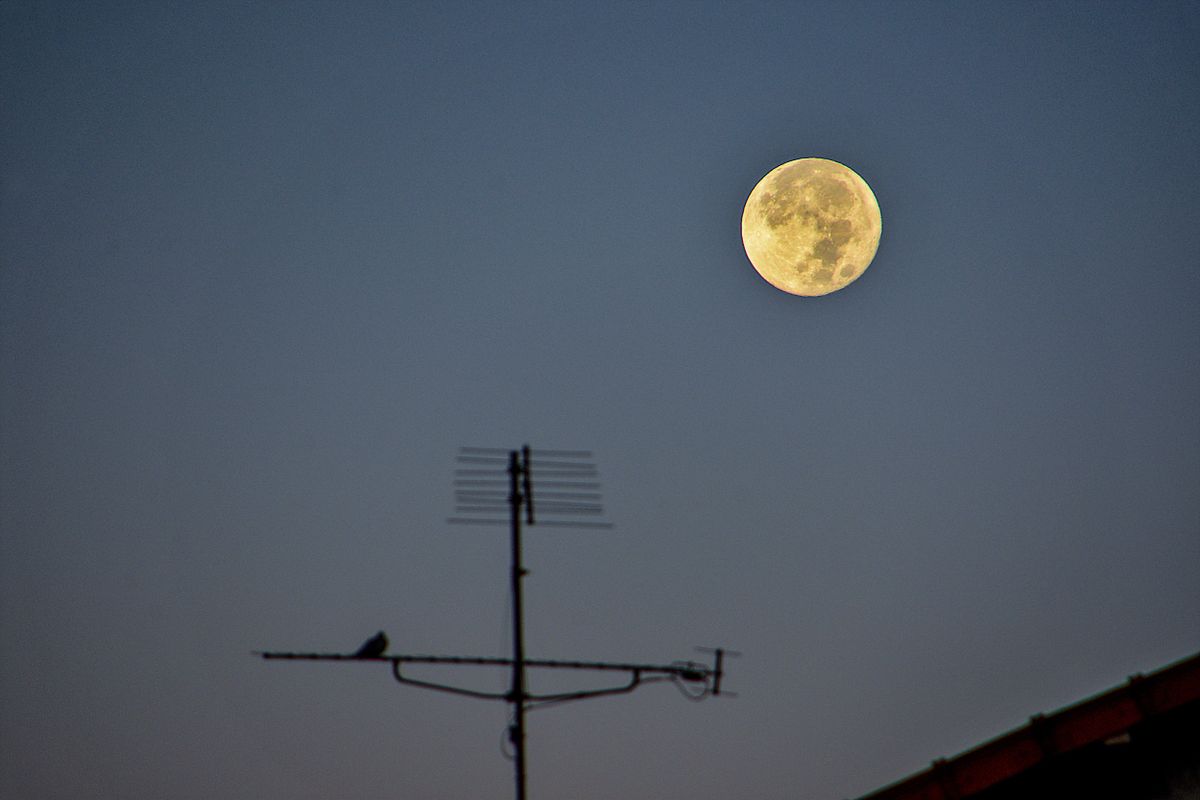This Friday’s full moon will be a somewhat special one in that it will carry the title of “Harvest Moon” for those living in the Northern Hemisphere.
The moon officially will turn full when it reaches a spot in the sky opposite (180-degrees) to the sun. This moment will occur on Friday (Sept. 29) at 09:57 Greenwich Time (or in the Eastern Time zone, just prior to moonset at 5:57 a.m.).
It also turns out that this full moon is the one that comes closest to the September equinox. In 2023, this circumstance comes a bit later than usual. While most traditionally associate the Harvest Moon with the month of September, there are some years where it falls in the month of October. Between 1970 and 2050, for instance, there are 18 years when the Harvest Moon comes in October. The last time was in 2020 and next time will be in 2025.
The Harvest Moon can occur as early as Sept. 8 (as it did in 2014) or as late as Oct. 7 (as it will in 2025). This Harvest Moon will also mark the last of four so-called “supermoons” in a row.
Supermoons are full moons that occur at or near perigee — when the moon is closest to Earth in its orbit — and offer a great time for seasoned lunar skywatchers as the moon can appear slightly bigger and brighter. Although, that luminosity and size difference is hard to spot for the casual observer. There were four supermoons that happened in a row since July, with two of them in August (the latter was a rare Blue Super Moon) leading to this month’s finale.
Related: Last supermoon of 2023 rises this week. Don’t miss the Harvest Moon shine with 3 bright planets
Many may believe that the Harvest Moon remains in the night sky longer than any of the other full moons we see during the year, but that’s actually not the case. That particular circumstance is reserved for the full moon closest to the Winter Solstice (which this year will come on Dec. 26).
Moonrise timings
What sets the Harvest Full Moon apart from other full moons is that farmers at the climax of the current harvest season can work late into the night because the moon’s light becomes so bright. It also rises about the time the sun sets, but more importantly, at this time of year, instead of rising 50 or so minutes later each evening (as usual) the moon seems to rise at nearly the same time every night.
For example, in New York City, moonrise on Sep. 28 is at 6:35 p.m. EDT. On Sep. 29th, moonrise is at 7:00 p.m. EDT and on Sep. 30, it’s 7:25 p.m. EDT. So compared to the normal rise time of 50 minutes later per night, the time of the Harvest Moon moonrise comes 25 minutes later. More specifically, that’s about one-half the normal delay..
This night-to-night difference is greatest in more southerly locations. For example: Cocoa Beach, Florida, located near latitude 28.4-degrees N, sees moonrise come an average of 35 minutes later. Meanwhile, at Calgary, Alberta, Canada located at latitude 51.0-degrees N, the average difference is only 15 minutes later.
The reason for this seasonal circumstance is that the moon appears to move along the ecliptic. At this time of year, when rising, the ecliptic makes its smallest angle with respect to the horizon for those living in the Northern Hemisphere.
Moonrise oddities at different latitudes
By contrast, for those living in the Southern Hemisphere, the ecliptic at this time of year appears to stand almost perpendicular (at nearly a right angle) to the eastern horizon. As such, the difference for the time of moonrise exceeds the average of 50 minutes per night. In Melbourne, Australia (37.8-degrees S), for instance, the night-to-night difference amounts to 75 minutes.
Interestingly, for those who live near the Arctic Circle — 66.7-degrees N, the moon does indeed appear to rise about the same time each night during the Harvest Moon’s reign. And for those who live even farther to the north, a paradox appears — the moon appears to rise earlier!
At Resolute Bay in Nunavut, Canada (latitude 74.7-degrees N), for instance, the times of moonrise on Sep. 28, 29 and 30 will be, respectively, 7:24 p.m. CDT, 6:31 p.m. CDT and 5:25 p.m. CDT. So, from Resolute Bay, the moon will seem to rise (on average) about 60 minutes earlier each night.
Nighttime harvesting is gone… but the moon remains
Recall that earlier, I had mentioned that our late-September moon could be utilized by farmers to work late into the night — if they cared to, that is. Indeed, a hundred years or so ago, when most harvesting was done solely by hand, these evenings of early fall moonlight were a godsend to harried farmers hurrying to get their late crops in before the winter season. They could cut, shock and husk corn by moonlight, right in the field if they cared to. They might also bring in the last stores after dinner and without much need of a lantern.
But those days are all but gone. Farmers now use choppers and corn pickers drawn by tractors to make the job go faster; even a late harvest is now a daylight job.
Thankfully, however, the Harvest Moon remains.
These next several evenings, step outside and enjoy the view; clouds notwithstanding, it will shine on magnificently in the east, brightly illuminating our early autumn evening sky.
Joe Rao serves as an instructor and guest lecturer at New York’s Hayden Planetarium. He writes about astronomy for Natural History magazine, the Farmers’ Almanac and other publications.

